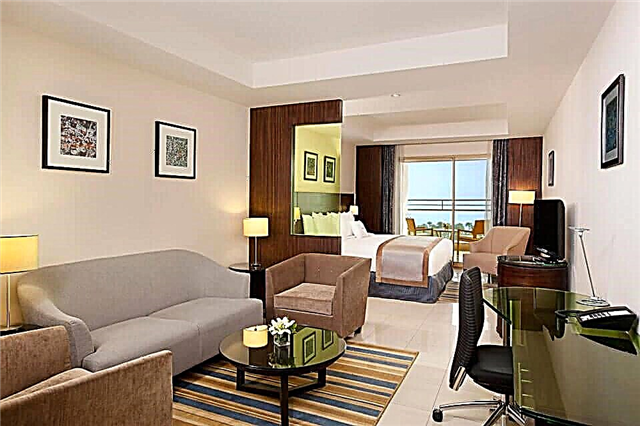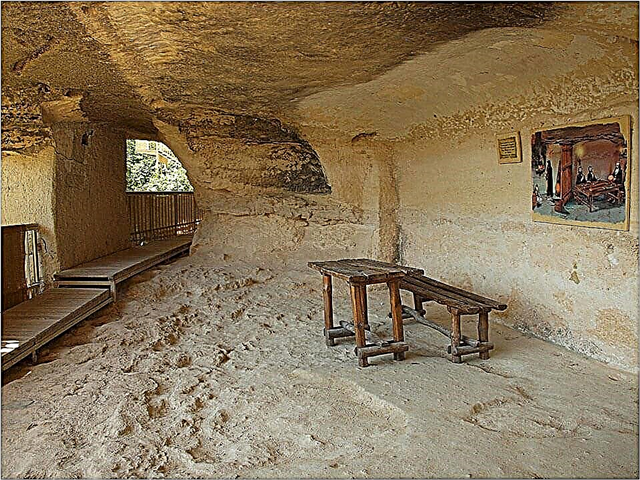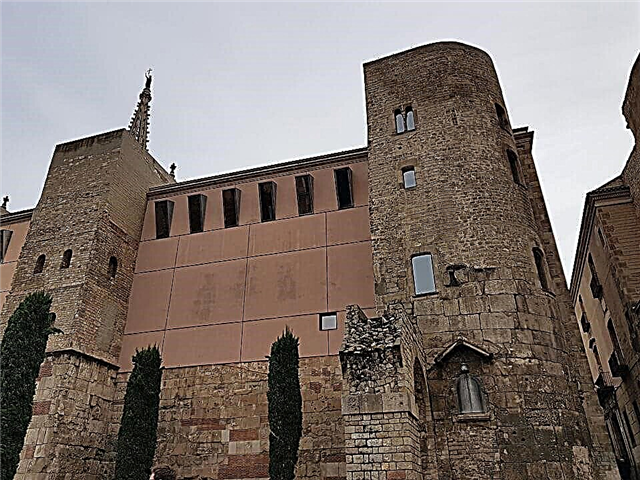The Gothic Quarter in Barcelona is located in the heart of the old city. Its name is explained by the fact that no other city in Europe has such a number of Gothic buildings collected in one place.
History

The Gothic Quarter is the oldest part of Barcelona, dating back more than 2000 years. At that time, there was a small settlement (about 1,000 people), surrounded by a fortress wall, called Barcino. In this place received land and settled retired Roman soldiers who were engaged in crafts, land cultivation, growing grapes, wine production.
By the 3rd century A.D. the settlement already numbered about 5 thousand people. Houses, temples, baths, aqueducts characteristic of the Romans of that era were built. As the power of the Roman Empire weakened, Barcino gradually fell into decay. The inhabitants were raided by the nomadic tribes of the Suevi, Vandals, Alans, and in the 5th century it was conquered by the Germanic tribe of the Visigoths. Roman buildings were partially destroyed, new ones arose in their place. From time to time the city passed from one tribe to another. And only when Barcino in the XII century. became part of the powerful Aragonese kingdom, construction and economic growth began.
What to see?
The Gothic Quarter is not a separate attraction, but a whole city with narrow labyrinths of gloomy medieval streets, squares, pointed towers of cathedrals, wrought iron bars and stained-glass windows. Many beautiful places are concentrated here, combining examples of architecture of the Gothic and Romanesque eras with later buildings.
Plaza Nova

Plaza Nova or New Square opens the entrance to the Gothic Quarter. It is the oldest square in the city, dating back to the 14th century. Until that time, it was located outside the city limits, it was a thriving market, where they traded not only food, hay, utensils, but also slaves.
Since ancient times, two Romanesque towers have been preserved on it, which were part of the fortress wall - the only defensive structure of the inhabitants of the city from the barbarian tribes. To the right of the towers is the 13th century Archbishop's Palace with a Baroque façade. On the left is the Archdeacon's Palace, which now houses the City Historical Archive. Here you can also see the ruins of the old aqueduct that supplied the city with water. Nearby is the Romanesque Chapel of Santa Lucia dating from 1275.

The modern building of the College of Architects attracts attention, which stands out from the general old ensemble. On the facade there is a decorative composition depicting scenes from the folklore of Catalonia, by P. Picasso.
Plaza de Sant Jaume
The name of the square was given by the medieval church of St. Jacob (Sant Jaume) standing here until the 19th century. This is the central square of the city, where the buildings of political power are located: the City Hall (Town Hall) and the Government Palace, political, social events and city celebrations are held.
In ancient times, it was the crossroads of the main streets of Barcino, and there was a forum here. The authorities have been located in this place since the XIV century. The square acquired its modern look at the beginning of the 19th century. Before that, there was a cluster of small shops located between the cemetery and the church. The square was cleared, the benches were removed, the church was moved to the next street, it became spacious and bright.
Cathedral

The Cathedral of the Holy Cross and Saint Eulalia - the oldest building in the city - is the main cathedral. Its construction lasted 122 years: from 1298 to 1420. The cathedral is a masterpiece of Gothic architecture. Dimensions of the building: 93 * 40 m. The facade is decorated with sculptures of saints; towers, spiers with the coats of arms of the knights go up 80 m. Some of the chapels, located three on each side of the square courtyard, still retain forged lattices of the 14th century. Colored bright stained-glass windows and carved seats were made with great skill.

The center of gravity of the interior is the wooden figure of Christ, which was brought here from the bow of the ship that took part in the battle of Lepanto. She is deformed, has the shape of the letter S, because she took the blow of an enemy core and saved the ship. Next to the main altar are the tombs of the Catalan rulers, founders, patrons of the temple. A Turk's head hangs from an imposing organ, reminiscent of the victory over the Muslims.

In the center of the courtyard there is a rotunda with a fountain. The snow-white geese floating in the reservoir symbolize the immaculate purity of Saint Eulalia, the patroness of Barcelona. A poor 13-year-old girl lived by raising geese. Having the gift of persuasion, she ardently urged the inhabitants of the city to renounce paganism, was persecuted and died as a martyr in the IV century for the faith of Christ. Geese are always 13 - according to the number of years of a young maiden. Since 1339, the cathedral has housed a white marble sarcophagus with the relics of a saint - a real work of art.
Great Royal Palace

The Great Royal Palace consists of several buildings, these are: the palace itself, the watchtower of King Martin, the chapel of St. Agatha. The building of the palace was erected in the XII century, it served as the residence of the counts and Aragonese kings. Later, a magnificent throne room was added to it, where in 1493 the monarchs Ferdinand and Isabella welcomed Admiral Columbus, who came from his first trip to the shores of America.
The Chapel of St. Agatha with the court chapel is an example of the graceful Gothic of the 14th century, decorated with a majestic bell tower, stained glass windows and wooden carvings. Inside there is a masterpiece of the Gothic art of Catalonia - the picturesque composition "Retablo del Connetable", consisting of episodes of Holy Scripture. The dominant feature of the palace ensemble is the high watchtower of King Martin of the 16th century, built with several tiers of galleries, which gives the square's peculiar character.
City Hall and Government Palace

The City Hall (City Hall) building is located on the Plaza de Sant Jaume, uniting three buildings of different eras and styles. It looks voluminous and majestic. Its neoclassical façade, dating from 1832-36, hides an old building from the 14th century, is decorated with a Gothic portico with columns and sculptures of great politicians, and is crowned with the coat of arms of Barcelona.

Opposite the City Hall is the Palace of the Government (Generalitata) - the seat of the current government of Catalonia. The building has several unusual facades: on the one hand, the Renaissance facade, designed by Pere Blai in 1596, on the other, the Gothic facade, dating from 1416, belonging to the architect Mark Safont. It depicts a sculpture of Saint George - the patron saint of Catalonia, defeating the dragon. Inside the palace is the chapel of St. George, dating from 1425.
King's Square

King's Square is a small space, almost completely enclosed by medieval buildings. This place is always not crowded, cool, which makes it possible to relax and have a pleasant time in a cozy outdoor cafe. It got its name because there is the Great Royal Palace, located in the depths of the square. On the left is the Viceroy's Palace (Palau del Llotinent). It is a four-story building with an Italian courtyard, where the governors of the king, who ruled Barcelona on his behalf, lived. The palace was built in the middle of the 16th century in the Renaissance style.

Now it houses the Aragonese Royal Archives, which contains valuable historical documents belonging to the royal dynasty. Opposite is the 15th century Clarian Padellas Palace. It was rebuilt several times, and acquired its modern look at the beginning of the 20th century. It currently houses the Historical Museum of Barcelona.In its basement halls, exhibits of the pre-Christian era are exhibited: fragments of ancient Roman buildings, the temple of Augustus. Next to the Clarian Padellas Palace is the chapel of Saint Agatha dating back to 1302. It was erected by order of King Jaime II and his wife Blanca de Anjou.
Frederic Mares Museum
The museum is located in the building of the Royal Palace. It began its existence in 1946, when the famous Catalan sculptor and traveler F. Mares donated his collection to the city. It included unique exhibits from the Roman period to the 19th century.
The museum currently consists of three expositions. On the ground floor there are sculptures, crucifixes, crosses from pre-Christian times to the 15th century. On the second - exhibits from the 15th-19th centuries. On the third, there is a unique exposition called the "sentimental" museum. It consists of utensils and household items (dishes, tools, postcards, jewelry, smoking accessories, etc.) that were used in the 15th - 20th centuries.
Roman columns

Roman columns represent the remains of the majestic temple of Augustus, which measured 37 * 17 m. It was erected in Barcino on the Taber hill at the end of the 1st century. BC. and glorified the emperor Augustus Caesar. Now on the hill on the site of the temple there is a plaque, and what is left of it is in the heart of the Gothic quarter.
These are four powerful Corinthian columns with a height of 9 meters, which are installed next to the Catalan Excursion Center and, as it were, squeezed between the walls. They are well preserved: flutes (vertical grooves running along the column) and architrave (base) are visible. In addition to the columns, small fragments of the lower podium part of the building have survived.
Houses of the Jews
The houses of the Jews are located in the Jewish quarter (El Call), which consists of several narrow streets, where the gloomy atmosphere of the Middle Ages is especially felt. Jews were outcasts among Christians, their habitat was fenced in by a wall. Christians were allowed to enter the Jewish quarter only during trading days. Now here you can see low houses with small windows, more like prison cells. Some have preserved underground labyrinths and secret doors. They were made to make it easier to leave in the event of a pogrom.
During one of them in 1391, the synagogue was badly damaged; it was restored only in the 20th century. It is now operational and available for visiting. You can learn about the history of Jewish life in Barcelona by visiting the Museum of the History of the Jewish Quarter. There are preserved household items of the 13th - 16th centuries, manuscripts, books, tombstones.
Basilica of La Merce

The Basilica of La Merce is located on the square of the same name, dedicated to Our Lady of Mercy. It stands on the site of the Gothic Church of St. Michael, belonging to the order of the Mercedaria, which was formed by the monks in 1218 after the appearance of the Virgin Mary to one of them. Their goal was to free the Christians captured by Muslims. By the 18th century. the temple was destroyed, and in its place in 1765 - 1775 a small church of Our Lady of Mercy was built.
The remains of the Church of St. Michael were used in its design. The dome is crowned with a bronze statue of the Virgin and Child. Above the entrance to the Basilica, there is a round stained-glass window that lets in soft light. The interior decoration is great. Her main relic is a miraculous wooden statue of the Mother of God. It is believed that in the 17th century she saved the inhabitants of Barcelona from the plague epidemic.
Where is the Gothic Quarter and how to get there
The Gothic Quarter is located in the center of the old town between Plaça Catalunya and the seafront. To his left is La Rambla, to the right is Via Layetana. There are several metro stations around, from which you will need to walk 10-15 minutes. The closest ones:
- Jaime I (L4)
- Drassanes (L3)
- Liceo (L3)
- Catalonia (L1, L3)
- Barceloneta (L4)
You can also get there by tourist or city bus (14, 17, 19, 40, 45, 59), to the Barry Gothic stop.











